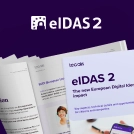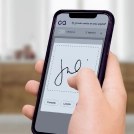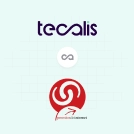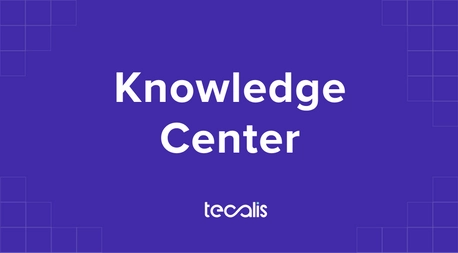Index
Get the latest news right in your inbox
The leasing contract has become an essential financial tool for companies and individuals seeking to optimize their resources without making large capital outlays.
In this article, we will go deeper into what this instrument consists of, its modalities, differences with other similar contracts and the importance of having digital tools for its creation and signature so that it has legal validity with regulatory compliance (eIDAS).
What is a leasing contract and how does it work?
A leasing contract is a financial agreement whereby one party, called the lessor, assigns the use of an asset (vehicles, machinery, technological equipment, etc.) to another party, called the lessee, in exchange for periodic payments.
The distinguishing feature of leasing contracts as opposed to a simple rental contract is the purchase option that is generally offered to the lessee at the end of the contract term. For a pre-agreed residual value, the lessee may acquire definitive ownership of the asset.
Leasing contracts can be drafted with different types and examples in mind. Also known as a financial leasing contract, a leasing contract highlights an entity (usually a financial institution) when it acquires an asset and makes it available to another party for use for a specified period of time. At the conclusion of the contract, the lessee usually has the option to purchase the asset at a previously established price, which allows access to resources without requiring a high initial investment.
Types and examples of leasing contracts
The world of leasing is varied, adapting to different types of assets and financial needs. Understanding these types is essential to choosing the most appropriate option when drafting your leasing contract. Below, we detail the most common types with illustrative examples of leasing contracts:
1. Financial Leasing:
- This is the most traditional and widespread form, characterized as a medium or long-term contract, where the lessee assumes most of the risks and benefits associated with the ownership of the asset (maintenance, insurance, obsolescence). The purchase option at the end of the period is usually for a symbolic or very low residual value.
- Example of a Financial Leasing Contract: A manufacturing company needs a new CNC (Computer Numerical Control) machine valued at €150,000. Instead of buying it outright, it signs a 5-year financial leasing contract with a financial institution. The company chooses the machine and the supplier. The financial institution buys the machine and leases it to the company. The company pays monthly installments covering the cost of the machine plus interest. At the end of the 5 years, the company can exercise the purchase option for a residual value of €1,500 and keep the machine. During the 5 years, the company is responsible for the maintenance and insurance of the CNC machine.
2. Operating Leasing:
- This type is more akin to a medium- or long-term lease. The lessor (often the manufacturer or distributor itself) gives up the use of the good, but retains ownership and assumes the main risks (obsolescence, maintenance). Periodic payments usually include additional services such as maintenance, insurance or repairs. The term of the operating lease contract is usually less than the economic useful life of the asset, and the purchase option, if any, is usually for the market value of the asset at that time, not for a symbolic residual value.
- Example of an Operating Lease Contract: A consulting firm needs to renew its fleet of 10 commercial vehicles. It opts for a 3-year operating lease contract. The leasing company (which may be a subsidiary of the car manufacturer) provides the vehicles. The monthly payments include the use of the car, comprehensive insurance, scheduled maintenance and repairs. At the end of the 3 years, the consultant returns the vehicles and may choose to start a new contract with newer models. They are under no obligation and do not necessarily have the option to purchase the vehicles at a predefined low price.

3. Lease-back (or Retroleasing / Sale and Leaseback):
- Description: A particular financial transaction where a company sells an asset it owns (usually significant real estate or equipment) to a leasing entity and signs a leasing contract to continue using that same asset as a lessee. The main objective is to obtain immediate liquidity (from the sale) without losing the use of the asset necessary for its operation.
- Example of a Lease-back Contract: A supermarket chain owns the building of one of its main stores, valued at 2 million euros. To finance its expansion to new cities, it decides to sell the building to a real estate investment company (acting as lessor) and simultaneously signs a 15-year financial leasing contract to continue operating in the same location. The chain receives the 2 million euros (less expenses) and starts paying monthly lease payments for the use of the premises. At the end of the 15 years, it may have the option to repurchase the property.
4. Real Estate Leasing:
- It focuses specifically on real estate (offices, industrial buildings, commercial premises, housing). It can be either financial or operational, although financial is more common for long-term acquisitions. It allows companies or individuals to use a property by paying installments and having the option to buy it at the end. It can be either financial or operational.
- Example of a Real Estate Leasing Contract: A young entrepreneur wants to open a restaurant but does not have the capital to buy premises. He finds suitable premises and negotiates a 10-year financial real estate leasing contract with an entity. The entity buys the premises from the current owner and leases it to the entrepreneur in exchange for monthly installments. At the end of the 10 years, the entrepreneur can pay the agreed residual value and become the owner of the premises where he has built his business.
5. Furniture Leasing:
- This includes the leasing of all types of movable property. This is a very broad category that includes leasing contracts ranging from vehicles (cars, trucks, vans) and industrial machinery to computer equipment (computers, servers), medical equipment, office furniture, etc. It can be financial or operational.
- Example of a Furniture Leasing Contract (Operating - IT): A technology startup needs to equip its office with 20 state-of-the-art laptops. It opts for a 2-year operating lease contract. An IT leasing company provides the equipment. The fees include usage, an extended warranty and the possibility of a 2-year technology upgrade. At the end of the term, the startup returns the laptops and can sign a new lease with more modern equipment, avoiding obsolescence and large initial outlays.
These examples of leasing contracts illustrate how different sectors can benefit from this financial instrument, adapting it to the particularities of each industry and specific need.
Definition of leasing or financial leasing
Leasing, or financial leasing, is a mechanism whereby the lessor finances the acquisition of an asset and assigns its use to the lessee in exchange for periodic installments. Legally, it is an atypical contract, since it combines elements of leasing and purchase options. Among its most important characteristics are:
- Established duration: The contract has a determined period during which the lessee may enjoy the property.
- Periodic payment: A fixed or variable installment is paid, which includes the amortization of the asset and, sometimes, interest.
- Residual value: At the end of the contract, a residual value is established, which is the price at which the lessee may acquire the asset.
- Tax aspects: Leasing may offer tax advantages for both the lessor and the lessee, depending on the legislation in force.
Leasing is, therefore, a financing alternative that allows companies to optimize their cash flow, avoiding capital immobilization and facilitating technological or infrastructure renewal without the complications of an outright purchase. Therefore, drafting leasing contracts and signing them properly is essential to keep the content of the contract in force and to ensure that it has legal backing.

Best tools to create and sign a leasing contract
With the digitalization of legal processes, the tools for creating and signing leasing contracts have evolved significantly. Today, the ideal is to use electronic signature solutions such as the one offered by Tecalis, which guarantee the integrity and authenticity of the document without the need for physical travel or complicated procedures.
Key Characteristics of a Good Electronic Signature Tool
- Security and encryption: It is essential that the tool has high standards of security and data encryption, ensuring the protection of sensitive information contained in the contract.
- Regulatory compliance: It must comply with international regulations such as the eIDAS regulation, which establishes the legal validity of electronic signatures in the European Union.
- Integration with KYC processes: The incorporation of identity verification processes (KYC in leasing contracts) adds an extra layer of security, allowing to authenticate the parties involved in an efficient way.
- Ease of use: The interface must be intuitive, allowing non-technical users to manage and sign documents without difficulty.
- Multiplatform compatibility: The possibility of signing from mobile devices or from any browser is a competitive advantage to adapt to the current needs of mobility and remote work.
Digitization in the signing of leasing contracts not only speeds up the process, but also reduces operating costs and improves the traceability of each transaction, guaranteeing the integrity of the document and the authenticity of the signatures.
How to draw up a legally valid leasing contract
Drafting a legally enforceable leasing contract requires an approach that addresses both financial and legal aspects. The following are the key steps to ensure that the contract is sound and compliant.
Essential Contract Requirements
- Identification of the parties: The contract must include complete and verified details of both parties (lessor and lessee). This is where KYC processes are crucial to ensure that both parties are legitimate and have the necessary documentation.
- Detailed description of the asset: It is important to specify all the characteristics of the leased asset, including its condition, serial number, location, and any other data that allows its precise identification.
- Financial terms: The amount of installments, residual value, applicable interest rate and any other relevant financial terms should be established. Transparency in these terms is key to avoid future conflicts.
- Duration of the contract: The term of the contract should be clearly defined, with start and end dates, and the conditions for renewal or early termination.
- Obligations and rights: Both the lessor and the lessee must have clearly defined rights and obligations, including maintenance of the good, insurance, and responsibilities in case of damage or loss.
- Non-compliance clauses: It is essential to include penalties or measures to be applied in the event of non-compliance with contractual obligations by any of the parties.
Tecalis Sign's electronic signature platform integrates the AlisGPT artificial intelligence tool that can draft your leasing contracts to make them legally valid and easy to sign.
eIDAS safety and compliance considerations
When using electronic signatures to sign a leasing contract, it is crucial to pay attention to security and regulatory compliance, especially Regulation (EU) No. 910/2014 (eIDAS). This regulation establishes a common legal framework for secure electronic interactions between citizens, businesses and public administrations in the European Union.
To choose the best type of electronic signature for your leasing contracts, you have to take into account the levels of electronic signature established by the standard:
- Simple (SES): Basic level (e.g., check a box, scanned signature). Offers less security and may be of limited probative value.
- Advanced (AES): Uniquely linked to the signer, allows identification, created with data that the signer can control, and linked to the signed data so that any subsequent modification is detectable. Requires a higher level of authentication.
- Qualified (QES): An advanced signature created using a qualified signature creation device and based on a qualified certificate. It has the equivalent legal effect of a handwritten signature throughout the EU.
In Tecalis Sign you can choose any model with more than 9 types of digital signatures. For leasing contracts, we recommend using the biometric advanced electronic signature.
Advantages of Using Electronic Signature for your Leasing Agreement
The use of electronic signatures in leasing contracts provides multiple benefits, among which the following stand out:
- Agility in the processes: It allows for a significant reduction in management time, avoiding travel and speeding up the closing of agreements.
- Cost reduction: By eliminating the need to print and store documents in paper format, the costs associated with document management are reduced.
- Increased security: Electronic signatures based on digital certificates guarantee the authenticity and integrity of the document, reducing the risk of fraud.
- Sustainability: Contributes to a reduction in paper consumption, supporting sustainable environmental practices.
- Accessibility: Facilitates signing and access to documents from any device connected to the Internet, which is essential in an increasingly mobile world.
Difference between leasing and renting contracts
It is very common to confuse leasing contracts with renting contracts, since both involve the payment of installments for the use of an asset. However, there are fundamental differences:
- Purchase option: In leasing, the lessee has the option to purchase the asset at the end of the contract, while in leasing this option is generally not contemplated.
- Duration of the contract: Leasing usually has a longer term, oriented to the eventual acquisition of the asset. In leasing, the duration is generally shorter and focused on operational use.
- Maintenance responsibility: In leasing, it is common for the supplier to take care of the maintenance of the asset, while in leasing these responsibilities usually fall on the lessee.
- Accounting and tax aspects: The way in which the two contracts are accounted for and treated for tax purposes is different. Leasing may offer specific tax advantages depending on local legislation, while renting is classified as an operating expense.
The right choice between leasing and renting will depend on the lessee's specific needs, financial situation and medium- and long-term objectives.

Electronic signature for the mobility sector: speed up your contracts
The Mobility sector, characterized by rapid technological evolution and the need for agile processes, benefits greatly from the implementation of electronic signatures in leasing, renting or any other type of contract in the mobility and transportation industry. Transportation companies, corporate fleets and urban mobility services find in this technology the perfect solution to accelerate the formalization of agreements and improve their customers' experience.
Impact on the Sector
- Operational efficiency: The electronic signature allows contracts to be managed immediately, eliminating waiting times and accelerating the incorporation of new assets or vehicles.
- Integration with digital platforms: Many mobility solutions use digital applications and platforms for fleet management. The incorporation of electronic signature tools integrates naturally with these systems, offering a seamless user experience.
- Security and transparency: By using advanced encryption and identity verification technologies, each signed contract is guaranteed to have full legal validity and security, which is essential in an industry where the management of high-value assets is common.
- KYC optimization: The integration of KYC processes in leasing contracts within the Mobility sector allows to quickly validate the identity of customers and companies, reducing the risk of fraud and improving the reliability of the agreements.































